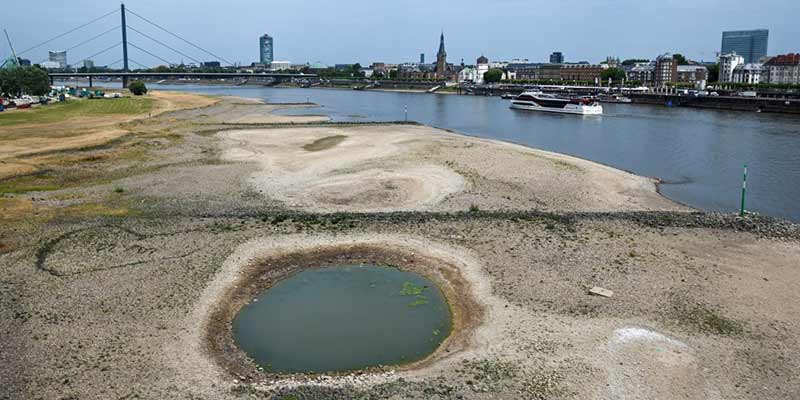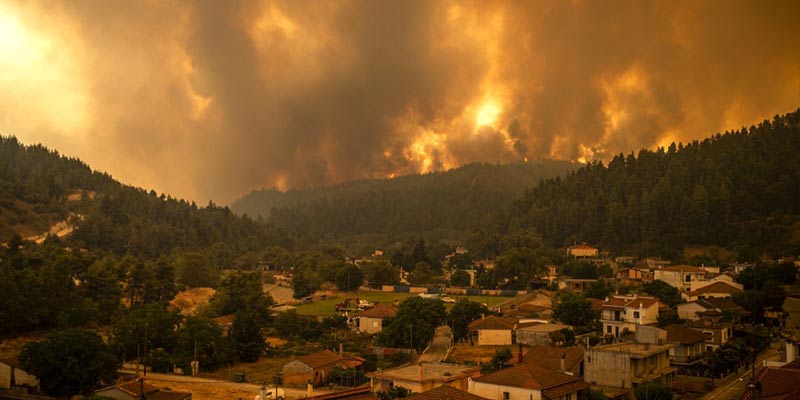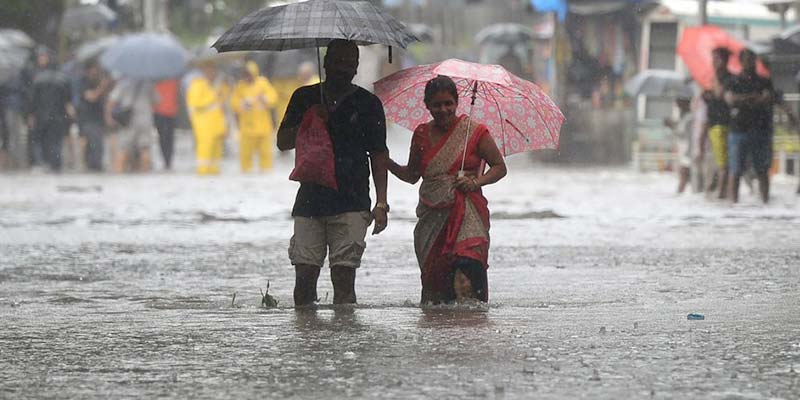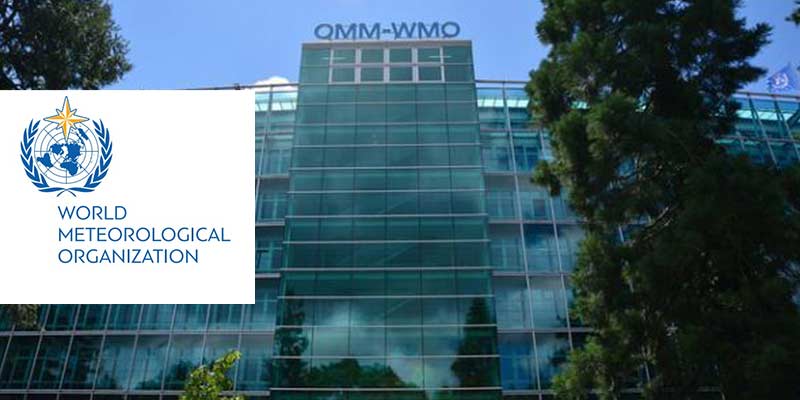- World
- Nov 13
Why climate services are vital to health sector?
The World Meteorological Organisation (WMO) has released State of Climate Services 2023, which focuses on health.
The WMO has issued annual reports on the State of Climate Services since 2019 in order to provide scientifically based information to support climate adaptation and mitigation.
Climate services for health
• The interconnection between climate and health is undeniable and multifaceted. Climate change impacts a wide range of health factors, from heat-related illnesses to the spread of infectious diseases and air pollution-related health issues.
• Health protection is a priority for climate policies in almost all countries and requires high-quality climate information to better inform decision-making.
• Due to increased weather, climate and water-related health hazards, the health sector will increasingly need reliable and robust information services to strengthen its resilience to climate change and variability.
• Climate services for health are a new type of health service to help the health sector become smarter and more agile in an uncertain and increasingly extreme climate.
• Climate services for health are “the entire iterative process of collaboration between relevant multi and transdisciplinary partners to identify, generate and build capacity to access, develop, deliver, and use relevant and reliable climate knowledge to enhance health decisions”.
Health functions that can benefit from being informed by weather and climate information include:
i) Vulnerability analysis, risk assessment.
ii) Disease control strategies.
iii) Health policy and regulations
iv) Disease monitoring and surveillance.
v) Financial and human resource allocation.
vi) Pharmaceutical, health, pesticide and vaccine supply flow.
• Integrated and applied climate products, services and systems that are robust and tailored can enhance the evidence and information available to health partners to detect, monitor, predict and mitigate climate-related health risks.
• Available climate, weather, environmental science, and technology are currently underutilised in the way the health sector does business and makes programmatic and financial decisions.
• Many countries do not have the requisite information to plan effective health adaptation measures. The WHO survey of Ministries of Health in 2021 revealed that only 48 out of 95 countries have completed a climate change and health vulnerability and adaptation assessment.
• Based on data from WHO, only 26 countries reported having climate-informed heat-health early warning systems in place for heat-related illness, and 24 countries reported having them in place for other extreme weather events.
Good health is a common outcome of other sectors
• There is huge potential for enhancing the benefits of climate science and climate services for people’s health and well-being.
• Weather services play a vital role in protecting public health by providing timely and accurate information that allows communities and individuals to prepare for and respond to weather-related risks.
• “Good health” is a common outcome of other sectors which provide clean water, sufficient and safe housing and transport, food security, access to energy and social services. Protecting health requires coordinated science, policy and action across many sectors and levels of governance.
• Public health and health protective functions in other sectors include water, sanitation and hygiene infrastructure and services, disaster and emergency services, land use and urban planning, and food security.
• To effectively use and benefit from climate services, health sector partners need appropriate data, computing and analytical capabilities, methods, tools and models, training, institutional architectures and appropriate governance, and funding for health research.
• Exposure monitoring, assessment, early warning systems and basic diagnostics can support a range of health decision applications.
• For example, historic climate observations can support epidemiological trend and regression analysis to understand associations of climate and health, set risk thresholds and inform disease control plans.
• Weather monitoring and nowcasting products that deliver real-time weather conditions can guide emergency interventions, such as identifying flooded areas, potentially damaged health infrastructure or isolated communities, and can help in deciding on staff deployment or delivery of supplies.
• Climate services tailored for other sectors, such as agriculture, water and energy, make important indirect contributions to public health by helping safeguard life-sustaining food, water and energy resources.
Examples of integrating climate services to health sector
• In Kenya, humanitarian organisations are better able to quantify the risk of anticipated drought thanks to improved forecasting, increased drought monitoring and the sharing of information. A survey in 2022 by Kenya Red Cross indicated that all of the rehabilitated water facilities remained functional throughout the drought period despite the increased dependence on them as a source of clean and cheaper water for household use, while drought impacts started peaking.
• In Europe, a mobile app has been developed to provide information on risks of heatwaves in urban environments. In 2022, thousands of visitors used the app to cope with heat and air pollution.
• Enhanced integrated risk monitoring and climate-informed early warning systems have helped people in Fiji to better prepare and respond to climatic changes, reducing morbidity and mortality from climate-sensitive diseases.
• The 2006 heatwave in France resulted in 2,065 excess deaths, which is significantly lower than what was expected – approximately 4,400 fewer deaths. This was attributed to increased awareness, preventive measures and the presence of a warning system.
World Meteorological Organisation (WMO)
• The World Meteorological Organisation (WMO) is a specialised agency of the United Nations.
• It is the UN system’s authoritative voice on the state and behaviour of the Earth’s atmosphere, its interaction with the oceans, the climate it produces and the resulting distribution of water resources.
• The WMO has 193 Members, including 187 Member States and 6 territories, maintaining their own meteorological services.
• It originated from the International Meteorological Organisation (IMO), which was founded in 1873.
• Established in 1950, WMO became the specialised agency of the UN in 1951 for meteorology (weather and climate), operational hydrology and related geophysical sciences.
• WMO facilitates the free and unrestricted exchange of data and information, products and services in real or near-real time on matters relating to safety and security of society, economic welfare and the protection of the environment. It contributes to policy formulation in these areas at national and international levels.
• WMO coordinates the activities of National Meteorological and Hydrological Services in 193 States and territories so that basic weather, climate and water services are made available to anyone who needs them.
Governance
• The World Meteorological Congress is the supreme body of WMO.
• The Executive Council implements its decisions, while six Regional Associations are responsible for the coordination of meteorological, hydrological and related activities within their respective Regions.
• The WMO has a president and three vice-presidents who preside over Congress and of the Executive Council.
• The Secretariat, headquartered in Geneva, is headed by the Secretary-General.
• The Secretary-General is appointed by the World Meteorological Congress for a four-year term with a maximum tenure of eight years. The Secretary-General is responsible for the overall technical and administrative work of the Secretariat.
Manorama Yearbook app is now available on Google Play Store and iOS App Store




